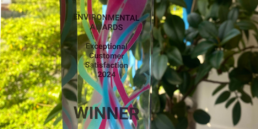Carbon Reduction Plan
Supplier name: SF Taylor
Commitment to achieving Net Zero
SF Taylor is committed to achieving Net Zero emissions by 2040.
Baseline Emissions Footprint
Baseline emissions are a record of the greenhouse gases that have been produced in the past and were produced prior to the introduction of any strategies to reduce emissions. Baseline emissions are the reference point against which emissions reduction can be measured.
Scope 1 emissions are direct greenhouse (GHG) emissions that occur from sources that are controlled or owned by an organization (e.g., emissions associated with fuel combustion in boilers, furnaces, vehicles).
Scope 2 are emissions that a company causes indirectly when the energy it purchases and uses is produced. For example, for our electric fleet vehicles the emissions from the generation of the electricity they’re powered by would fall into this category.
Scope 3 value chain emissions encompasses emissions that are not produced by the company itself, and not the result of activities from assets owned or controlled by them, but by those that it’s indirectly responsible for, up and down its value chain. An example of this is when we buy, use and dispose of products from suppliers.
| Baseline Year: 2022 | |
| Additional Details relating to the Baseline Emissions calculations. | |
| Baseline year emissions: 2022 | |
| EMISSIONS | TOTAL (tCO2e) |
| Scope 1 | TOTAL 74.49tCO2e |
| Scope 2 | TOTAL 21.08tCO2e |
| Scope 3
|
TOTAL tCO2e. Undetermined – further aspects to be examined.
Scope 3 subsets which have been examined amount to 75.1tCO2e |
| Total Emissions | TOTAL 95.57tCO2e (based on scope 1 and scope 2 emissions, as well as subsets of scope 3) |
Current Emissions Reporting
| Reporting Year: 2023 | |
| EMISSIONS | TOTAL (tCO2e) |
| Scope 1 | 75.62tCO2e |
| Scope 2 | TOTAL 15.81tCO2e |
| Scope 3
(Included Sources) |
TOTAL tCO2e. Undetermined – further aspects to be examined.
Scope 3 subsets which have been examined amount to 73.2tCO2e |
| Total Emissions | TOTAL tCO2e (based on scope 1 and scope 2 emissions, as well as subsets of scope 3) |
Emissions reduction targets
We have set an emissions reduction target of 5% for 2023, which is yet to be determined as this will depend on data gathered within the remainder of the year. If we achieve this target, we will establish future targets based on our current emissions and the reductions needed to achieve carbon neutrality by 2040.
Our calculations currently cover Scope 1 and Scope 2 emissions related to our internal workflows and processes. However, due to the complexity of certain Scope 3 emission indicators, we are collaborating with our suppliers to establish a baseline from 2022. We will also continue to monitor their emissions in relation to our contracts and explore improved calculation methods.
We anticipate a decrease of a minimum of 20tCO2e over the next two years.
We are considering carbon offsetting and technologies such as carbon capture and storage to bridge the gap between actual emissions and achieving net-zero carbon status.
These targets will undergo analysis by the conclusion of 2023 and will be subject to regular assessments to compare our projected targets with actual progress. This ongoing evaluation will help us ensure that we remain on track to reach our 2040 goal, and it provides the flexibility to implement necessary adjustments if we identify any shortfalls in our targets.
Carbon Reduction Projects
Completed Carbon Reduction Initiatives
Since establishing our 2022 baseline, we have successfully executed a series of environmental management measures and projects.
Our baseline for measuring emissions extends from January 2022 through January 2023.To ensure transparency, consistency, and continuous improvement, we have a dedicated environmental committee. This committee convenes quarterly to deliberate on our environmental targets and track progress. It also provides an open forum for sharing insights, research findings, and innovative ideas for potential new initiatives.
- Our commitment to sustainability extends to staff education, where we provide comprehensive training on proper recycling practices, effective office waste separation, and energy-saving techniques. Additionally, we’ve strategically placed reminder signage in common areas to ensure lights are switched off when not in use.
- Building a collective sense of responsibility, we have held company wide engagement sessions to raise awareness among our workforce regarding the significant impact of their decisions on our journey towards achieving net-zero emissions. This includes campaigns such as Bike to Work and Car Pooling initiatives.
- Reduced travel, due to our hybrid, flexible working policy has also positively contributed to reducing our carbon footprint as an organisation.
- In our ongoing effort to offset our carbon emissions, we proudly collaborate with Oblong Trees, a non-profit organization dedicated to planting native Broadleaf trees on our behalf. This invaluable partnership allows us to mitigate our carbon emissions by approximately 6tCO2e amount each month (bearing in mind, this is taking into account what the lifetime of the tree may be and therefore not an immediate reduction). This is a figure that is approximately ten times our own carbon emissions output.
- We are ISO 14001 accredited which is has assisted us in setting standards to establish, implement, maintain, and continually improve our environmental performance. Achieving ISO 14001 accreditation demonstrates our commitment to reducing its environmental impact, ensuring legal compliance, and promoting sustainable practices.
- In addition to this, being FSC (Forest Stewardship Council) certified is a crucial aspect of our carbon reduction plan. FSC certification verifies that products come from responsibly managed forests, ensuring they meet stringent environmental and social standards. This certification supports carbon reduction by promoting sustainable forestry practices that absorb carbon dioxide, mitigating deforestation, and fostering biodiversity. The benefits of ISO 14001 accreditation and FSC certification in our carbon reduction plan include enhanced environmental credibility, assistance with sustainable resource management, compliance with environmental regulations and improved resource efficiency.
We foresee that forthcoming initiatives have the potential to deliver a complete reduction of our CO2 emissions and these initiatives will continue to be prioritised, now and into the future until and beyond the time when we reach our net-zero targets. Crucially, these measures will be actively implemented as part of our contract performance efforts.
Future Carbon Reduction Initiatives
In the future we hope to implement further measures such as:
- Expanding our commitment to tree planting initiatives, we are not only seeking to offset our carbon emissions through audited carbon credits but are also integrating this activity into new contracts. This empowers our customers with complete transparency regarding the carbon output and subsequent reductions directly associated with their contracts.
- Embracing sustainability in our vehicle fleet, we plan on making a strategic investment in electric vehicles. We’ll initiate a trial phase, integrating electric vehicles alongside our current fuel-based vans. This allows us to assess their practicality within our delivery demands, schedules, and logistics, paving the way for a smoother transition to a fully electric fleet before 2040.
- Over the next five years, we are committed to implementing additional measures that further reduce emissions. This includes the collection of high-quality, primary data on our emissions for enhanced reduction strategies and progress tracking.
- To bolster our carbon reduction efforts, we’re allocating a larger budget to initiatives aimed at achieving our net-zero goals.
- We’re exploring a new machinery infrastructure designed to utilise renewable energy, allowing us to recycle gas and electricity for renewable energy within our manufacturing process.
- Our objective is to procure 100% renewable electricity before 2050.
- Implementing a sustainable travel policy is on our agenda to minimize business travel via air, rail, and road, using alternative measures wherever feasible.
- Collaborating closely with our suppliers and clients, we’re working to understand their emissions profiles and encourage them to establish their own carbon reduction targets in alignment with ours. We maintain an open channel of communication with our suppliers, ensuring that they either have a carbon reduction plan in place or are actively progressing towards one. Our commitment is to partner exclusively with suppliers who share our dedication to achieving carbon neutrality and align with our organisational goals.
Declaration and Sign Off
This Carbon Reduction Plan has been completed in accordance with PPN 06/21 and associated guidance and reporting standard for Carbon Reduction Plans.
Emissions have been reported and recorded in accordance with the published reporting standard for Carbon Reduction Plans and the GHG Reporting Protocol corporate standard and uses the appropriate Government emission conversion factors for greenhouse gas company reporting. These figures have not yet been independently validated.
Scope 1 and Scope 2 emissions have been calculated in accordance with SECR requirements and guidance, and the required subset of Scope 3 emissions have been reported in accordance with the published reporting standard for Carbon Reduction Plans and the Corporate Value Chain (Scope 3) Standard.
This Carbon Reduction Plan has been reviewed and signed off by the board of directors.
Signed on behalf of the Supplier:
Simon Young
Managing Director
More news from SF Tayor
May 13, 2024
SF Taylor Wins Environmental Award for Exceptional Customer Satisfaction 2024!
Our increased client base has led to an expansion in our workforce, creating new jobs within the industry.
November 6, 2023
Celebrating 40 Remarkable Years at SF Taylor
Our increased client base has led to an expansion in our workforce, creating new jobs within the industry.
October 31, 2023
A Splash of Pink and a Whole Lot of Heart: Our Day Supporting the Wear It Pink Campaign
Our increased client base has led to an expansion in our workforce, creating new jobs within the industry.



